
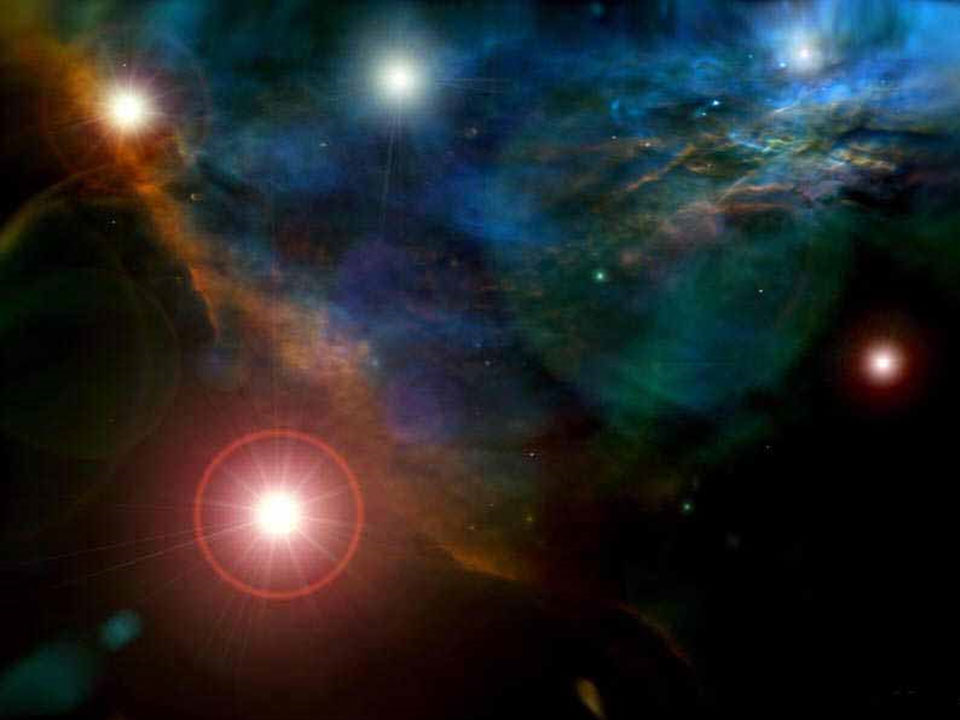

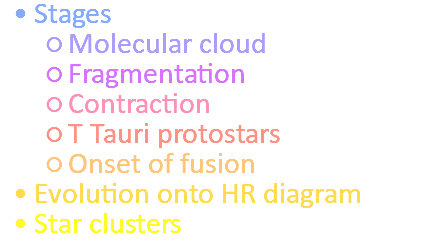
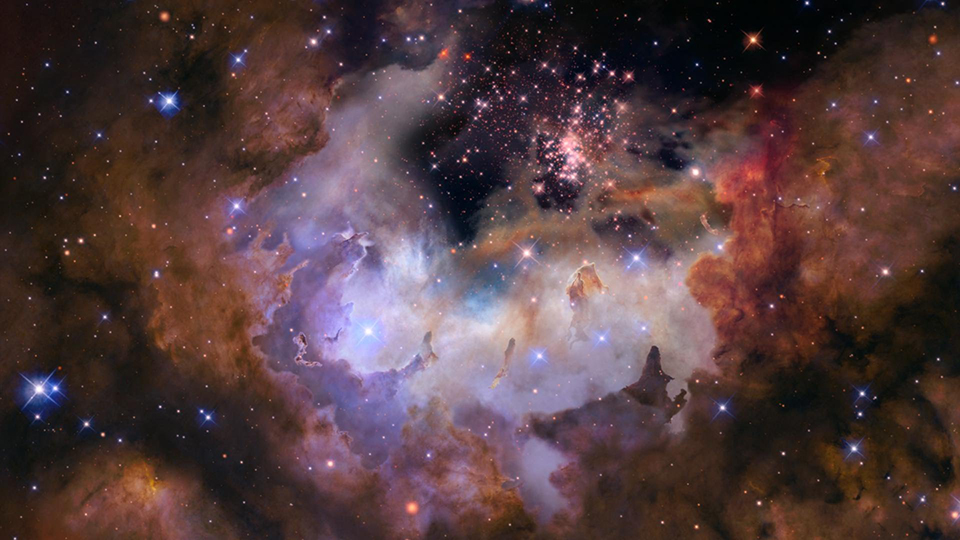
The Carina nebula houses this young star cluster. Stars are born in huge clusters, in fragments of Giant Molecular Clouds. The image above shows one such fragment,
in the Carina Nebula. Here you can see a cluster of young stars surrounded by an empty bubble, where the fierce stellar wind from the young stars has blown away the surrounding dust and gas. This star cluster is called the Westerlund 2 cluster. What would it be like to fly through this nebula? Check out the animation below. Image source
Star formation stages
- Molecular cloud
- Fragmentation
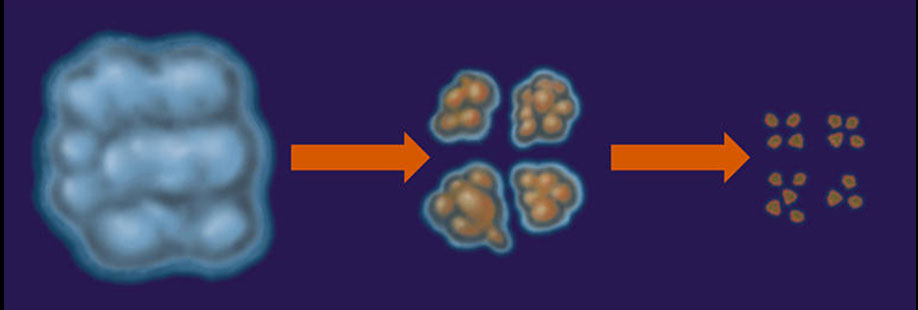
© 2005 Pearson Prentice Hall, Inc.
A Giant Molecular Cloud fragments into smaller pieces. Eventually, the fragmentation process stops, and the fragments contract under the force of gravity. As they contract, they get hotter and pressure inside the fragments increases. The gravitational force must be very strong to hold the fragment together under this high pressure. It takes very many massive particles, mostly hydrogen and helium, to provide the gravitational force needed.
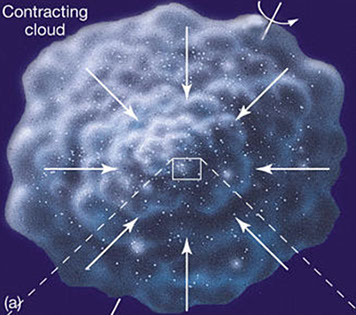

© 2005 Pearson Prentice Hall, Inc.
The cloud fragment has some overall rotation when it fragments from the Giant Molecular Cloud. As the fragment contracts, it spins faster and faster as the size decreases. This is similar to what you see when a skater speeds up as she brings in her arms as she spins.
The spinning fragment is called a protostellar disk. The rotation of the protostellar disk helps to keep it from collapsing, along with the pressure. Unlike the pressure support, the rotation doesn't work along the axis of rotation, but only works against collapse along the radius of the disk. This causes it to flatten into a disk shape.
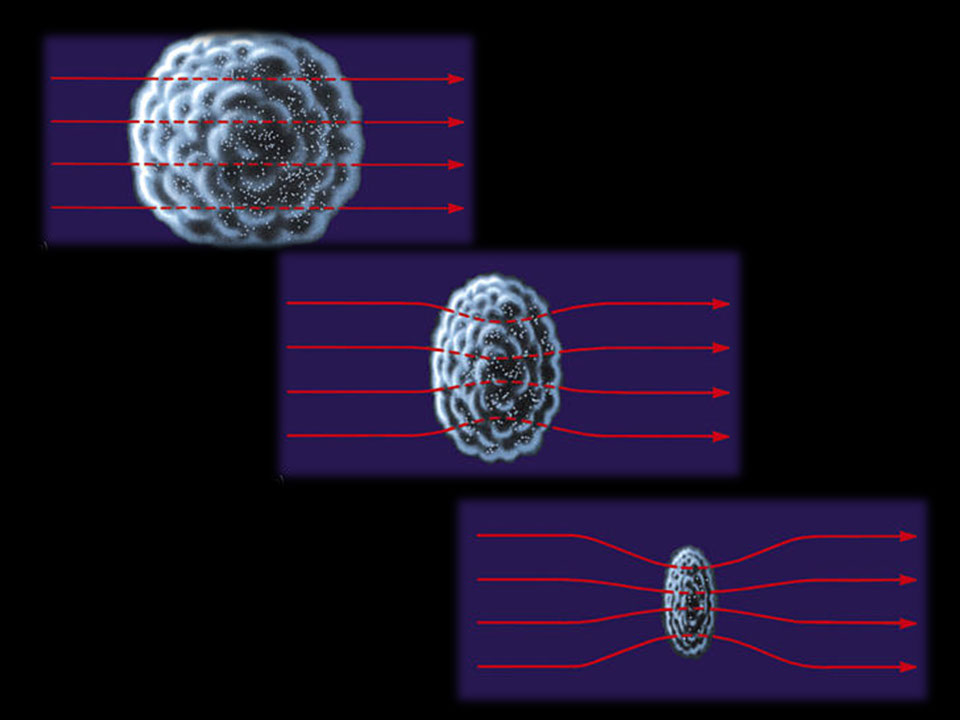
magnetic field effects
© 2005 Pearson Prentice Hall, Inc.
The magnetic field provides another source of support against the gravitational collapse. Protostellar disks are made of plasma. A plasma is a fluid where the positively charged particles can move independently from the negatively charged particles, so that electrical currents can flow. In a plasma, the magnetic field lines tend to be "frozen into the fluid" so when the gas contracts, the magnetic field lines contract with it. Magnetic field lines tend to resist being condensed, so a kind of pressure called "magnetic pressure" arises in the disk.
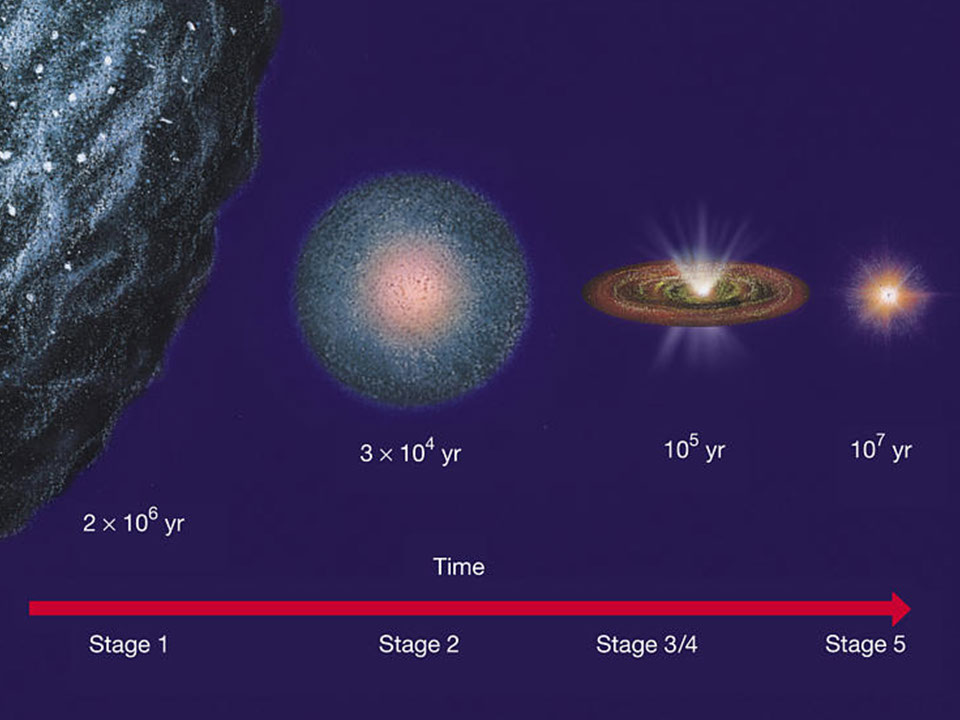
© 2005 Pearson Prentice Hall, Inc.
This graphic illustrates the estimated time required for the stages of development for a typical star. The initial fragmentation may take a couple of million years, while the initial gravitational contraction of the cloud fragment may take tens of thousands of years. The evolution of the protostellar disk may take hundreds of thousands of years. This evolution of the disk happens before fusion in the star begins.
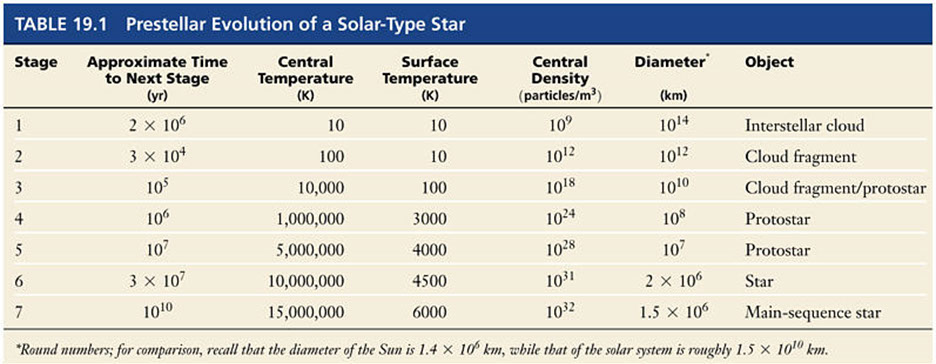
© 2005 Pearson Prentice Hall, Inc.
The table above gives estimates for the temperature, density and diameter for various stages of the developing star. Notice that the diameter gets smaller and smaller, while the temperature and density increase. The central temperature is approximately the same as the surface temperature in the early stages, when the object is large. That is because the density is so small that heat can easily escape to surrounding space. As the object collapses, density increases, and heat becomes trapped inside, making the core temperature much higher than the surface temperature.
Simulation source: K Hadley
This simulation shows what happens when a shock wave encounters a high density region. Notice that the shock front wraps around the object. This helps to promote contraction in the object. This process is similar to what happens to a nebular fragment. The shock front wraps around the fragment to help the onset of contraction. When the density in the fragment gets high enough, gravity takes over to pull the fragment to contract even more.
Experiment with this PhET interactive to check out how pressure, temperature and gravity are related to each other in a simple system.

In this equation, k is a constant and N is the number of molecules present.
The ideal gas law gives the relationship between pressure, volume and temperature for an ideal gas. The assumptions here are that there are a large number of molecules present and that the molecules themselves take up negligible space. It is also assumed that no other forces act on the molecules, except elastic forces when they collide. Much of the behavior of the gas in stars and protostars can be understood in terms of the ideal gas law.
- Increasing temperature with volume constant increases pressure
- Increasing temperature with pressure constant increases volume
- Increasing pressure with temperature constant decreases volume
- Increasing volume with temperature constant decreases pressure
In protostars as well as in stars, gravity pulls inward while pressure and centrifugal force pull outward.

Fragments of a giant molecular cloud spin up and heat up as they contract under the pull of gravity. Here, we will discuss the formation of protostars up to the onset of fusion.